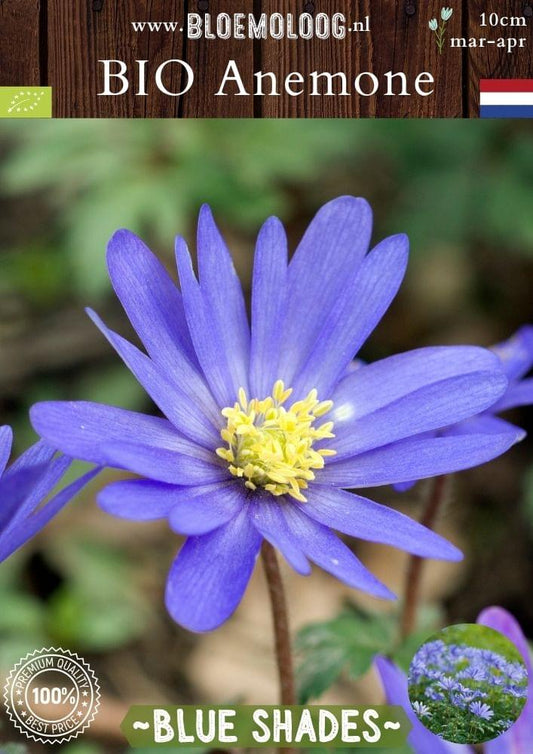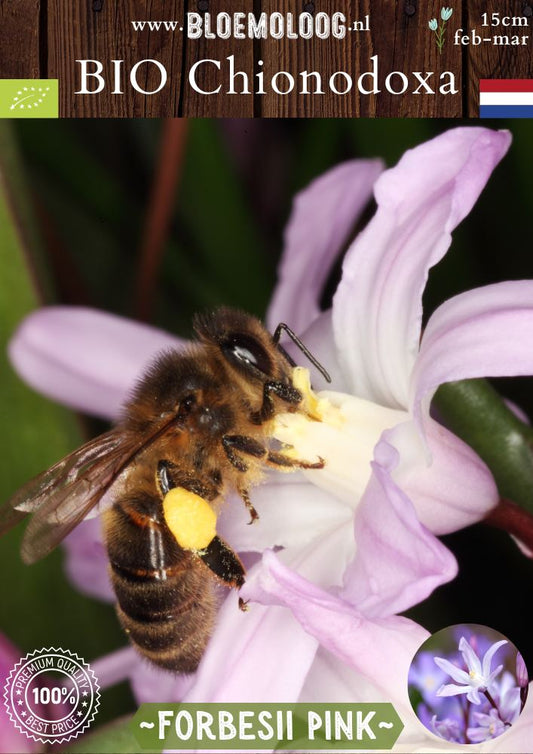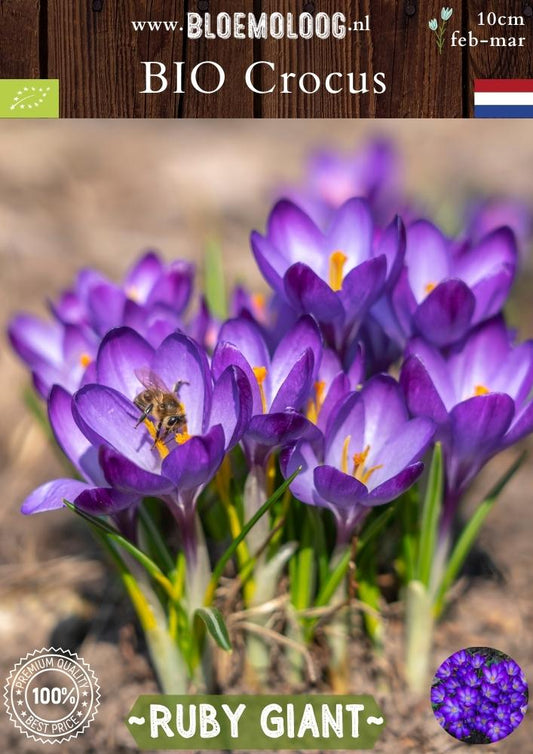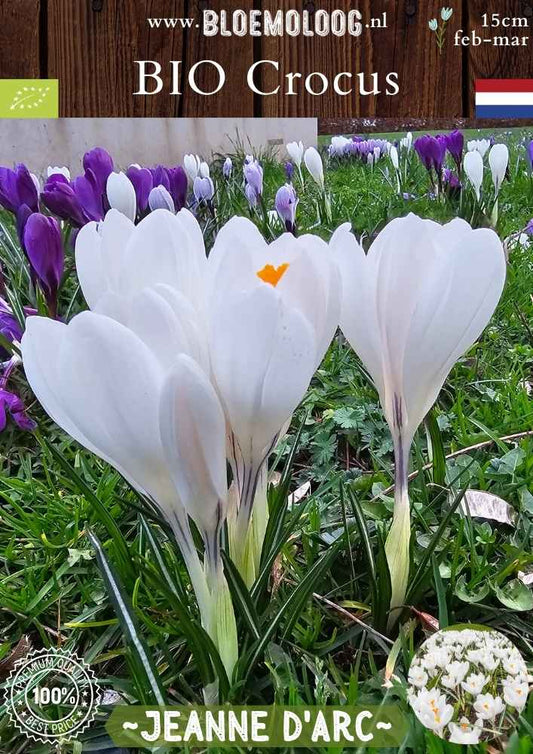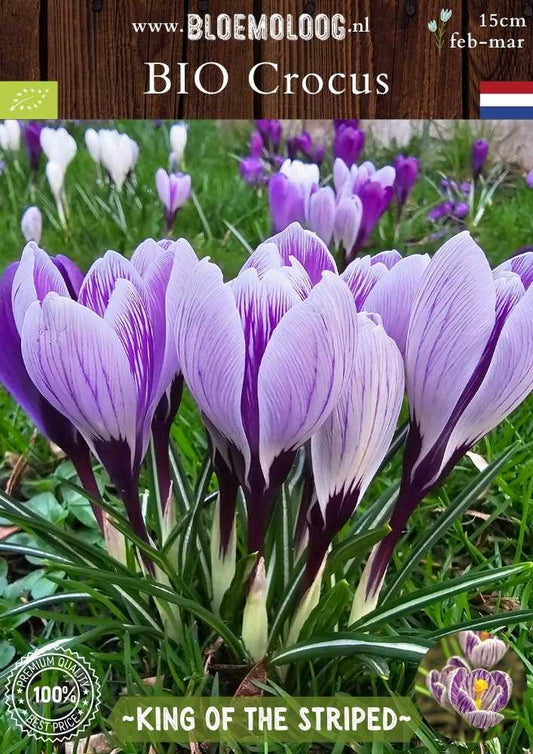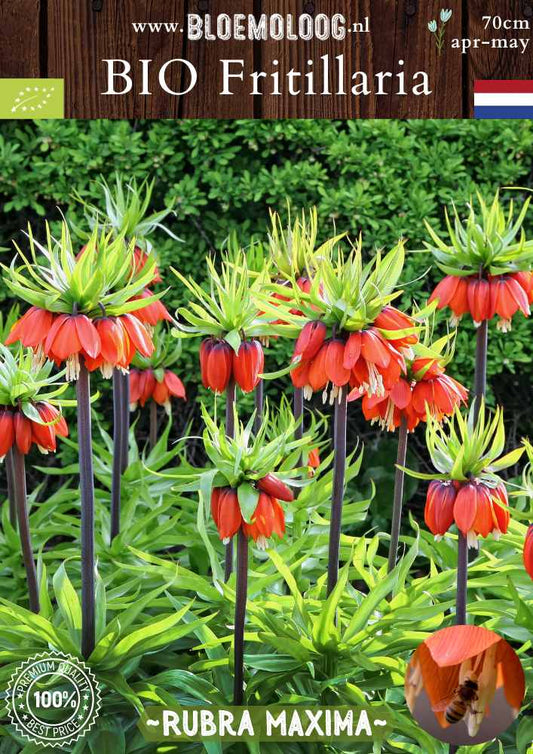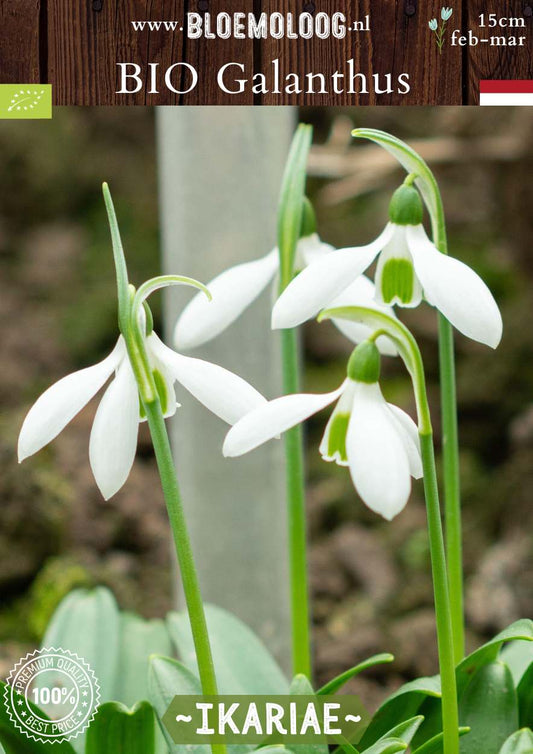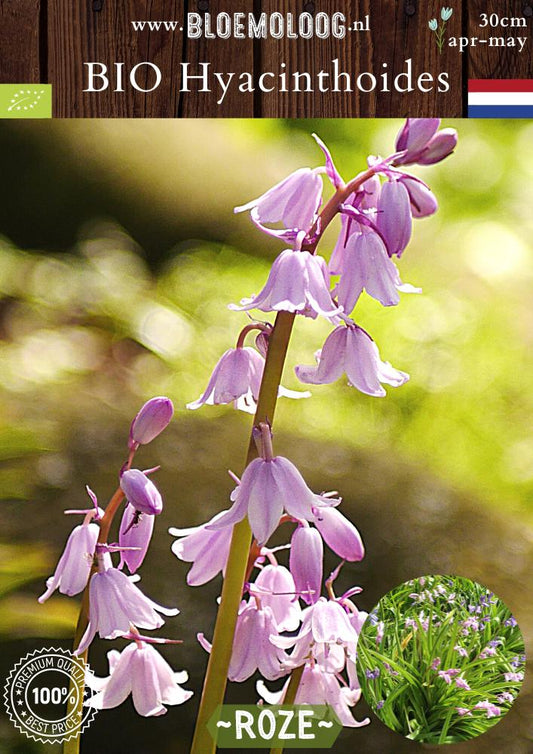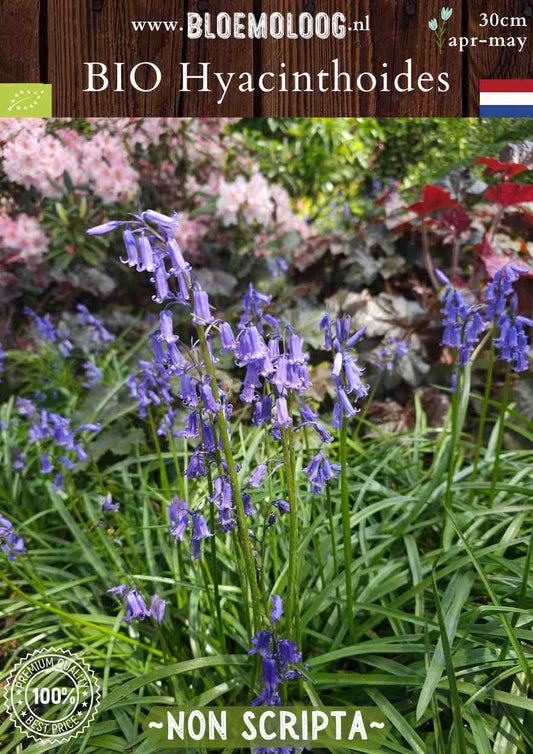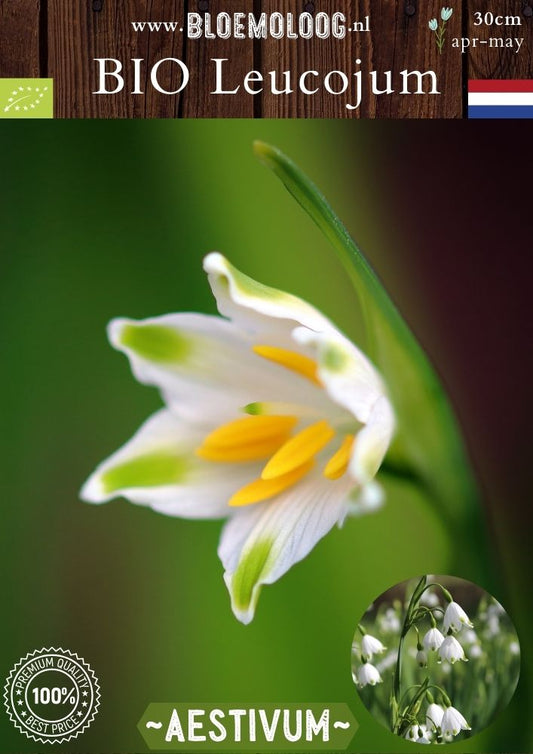
Collection: Stinzen plants
What are stinzen plants?
Grandpa Stins often told me about these flower bulbs and plants. Stinzen plants, or “stinsen plants,” are a group of plants mainly found in historic gardens, estates, and parks in the Netherlands. They are mostly perennial bulb and tuber species that bloom from early spring. Stinzen plants contribute to biodiversity and provide a colorful floral display in spring.
Historic, exotic naturalizers
Stinzen plants owe their name to “stinzen,” fortified manor houses where they were originally planted. These plants were introduced from the 16th century onward by wealthy estate owners and come from various parts of Europe, including Central and Southern Europe. Over the years, these exotic plants have naturalized and established themselves in the Dutch landscape. Besides their historical and aesthetic value, stinzen plants support biodiversity in the gardens and parks where they grow, especially in early spring when they are often the first to bloom.
Growing locations for stinzen plants
Stinzen plants are popular due to their ability to multiply. But where does each stinzen plant thrive best? Some stinzen plants grow well in shade or prefer shade during dormancy and sun during bloom. These are best placed under deciduous trees. Others love full sun because they can tolerate dry conditions.
Stinzen plants for shady spots
- Wood hyacinths: Formerly known as scilla, bluebells come in various colors and prefer partial or full shade.
- Leucojum: Also known as spring snowflake (vernum) or the variant 'Aestivum' as summer snowflake, similar to snowdrops. Prefers partial or full shade.
- Snowdrop: Available in various types with bell-shaped flowers. They do well in partial or full shade.
Stinzen plants for full sun
- Fritillaria: Available in many varieties. Prefers partial shade or full sun.
- Crocus: Blooms from February onward and is suitable under deciduous trees or in full sun.
- Tulip: Tulipa 'Sylvestris' is a wild tulip also known as woodland tulip, best grown in partial shade or sun.
Caring for stinzen plants
Stinzen plants are low-maintenance and ideal for naturalizing. This means their bulbs do not need to be replanted annually like many tulips or ornamental alliums. If planted in the right spot, the bulbs multiply underground and bloom more each year. Adding garden compost is recommended.
Organic stinzen plants
De Bloemoloog sells only stinzen plants from Skal-certified growers to provide you with the highest quality flower bulbs. De Bloemoloog also grows organic snowdrops of the Ikariae variety.
Ordering stinzen plants
Stinzen plants can be ordered in our webshop from June through January. Delivery starts in early September.
Buying stinzen plants at markets
You can also find us at various markets and fairs. From August to January, stinzen bulbs are sold loose, not pre-packaged, directly from mesh crates. This allows for custom selection and the best quality bulbs.
-
Organic Anemone blanda - Grecian windflower | 10 pcs.
Regular price €4,99Regular priceUnit price €0,50 / per item -
Organic Chionodoxa forbesii 'Blue Giant' - Glory of the Snow | 10 pcs.
Regular price €4,95Regular priceUnit price €0,50 / per item -
Organic Chionodoxa forbesii 'Pink Giant' - Pink Glory of the Snow | 10 pcs.
Regular price €4,95Regular priceUnit price €0,50 / per item -
Organic Crocus tommasinianus 'Ruby Giant' - Tommy Crocus | 10 pcs.
Regular price €3,95Regular priceUnit price €0,40 / per item -
Organic Crocus vernus 'Jeanne d'Arc' - Giant Dutch crocus | 10 pcs.
Regular price €3,95Regular priceUnit price €0,40 / per item -
Organic Crocus vernus 'King of the Striped' - Giant dutch crocus | 10 pcs.
Regular price €3,95Regular priceUnit price €0,40 / per item -
Organic Fritillaria imperialis 'Rubra Maxima' - Imperial Crown
Regular price €5,50Regular priceUnit price / per -
Organic Fritillaria 'Meleagris' - Chess flower | 10 pcs.
Regular price €4,95Regular priceUnit price €0,50 / per item -
Organic Galanthus elwesii 'Polar Bear' - Broad-leaved Snowdrop | 5 pcs.
Regular price €6,95Regular priceUnit price €1,39 / per item -
Organic Galanthus ikariae - Ikaria snowdrop | 10 pcs.
Regular price €4,95Regular priceUnit price €0,50 / per item -
Organic Galantus nivalis - Common snowdrop | 5 pcs.
Regular price €4,95Regular priceUnit price €0,99 / per item -
Organic Hyacinthoides 'Excelsior' & Narcissus poeticus 'Recurvus' Mix | 20 pcs.
Regular price €12,95Regular priceUnit price €0,65 / per item -
Organic Hyacinthoides hispanica 'Alba' - White wood hyacinths | 10 pcs.
Regular price €4,95Regular priceUnit price €0,50 / per item -
Organic Hyacinthoides hispanica 'Excelsior' - Wood hyacinths | 10 pcs.
Regular price €5,95Regular priceUnit price €0,60 / per item -
Organic Hyacinthoides hispanica 'Mix' - Wood Hyacinths | 30 pcs.
Regular price €13,95Regular priceUnit price €0,47 / per item -
Organic Hyacinthoides hispanica 'Pink' - Wood hyacinth | 10 pcs.
Regular price €4,95Regular priceUnit price €0,50 / per item -
Organic Hyacinthoides hispanica - wood hyacinths | 10 pcs.
Regular price €4,95Regular priceUnit price €0,50 / per item -
Organic Hyacinthoides non scripta syn. Scilla nutans - Bluebells | 7 pcs.
Regular price €6,95Regular priceUnit price €0,99 / per item -
Organic Leucojum aestivum 'Gravetye Giant' - Loddon lily | 5 pcs.
Regular price €5,95Regular priceUnit price €1,19 / per item -
Organic Muscari 'Armeniacum' & Tulipa 'Lilac Wonder' mix | 20 pieces
Regular price €9,90Regular priceUnit price €0,50 / per item -
Organic Muscari 'Early Bird' | 10+10 pcs.
Regular price €5,35Regular priceUnit price €0,54 / per item€10,70Sale price €5,35Sold out -
Organic Muscari 'Latifolium' - Grape hyacinths | 10+10 pcs.
Regular price €4,50Regular priceUnit price €0,45 / per item€9,00Sale price €4,50Sold out -
Organic Muscari 'Armeniacum' - Grape hyacinth | 10 pcs.
Regular price €3,95Regular priceUnit price €0,40 / per item -
Organic Narcissus 'Tête-à-Tête' & Muscari 'Armeniacum' mix | 20 pcs.
Regular price €9,95Regular priceUnit price / per
-
Organic spring bulbs
Spring-flowering bulbs and tubers are popular plants that produce beautiful flowers from early spring through summer. Because of their early bloom, they combine well with perennials when they still need to establish themselves.
Tulips are probably the most well-known spring flowers. They come in many different colors, shapes, and sizes. Daffodils are known for their cheerful yellow flowers, but they also come in other colors like white and orange. Crocuses are small bulbous plants with striking flowers in shades of purple, yellow, and white. They are often the first flowers to appear in spring. Hyacinths have fragrant flowers in various colors, such as pink, purple, blue, and white. They are often planted in borders, flower beds, or pots.Benefits of organic spring bulbs
When you choose organic flower bulbs that bloom in spring, you can be sure that no chemicals or pesticides will end up in your garden. These pesticides are harmful to bees and prevent them from finding their nests. As a result, more and more bee species have been added to the red list in recent years. Together, we can do something about this!
Flower bulbs for wild bees
Did you know that wild bees lay eggs in their nests, which then hatch in early spring? These newborn insect helpers immediately search for food in the surrounding area. There are also insects that have hibernated and are desperately looking for a hearty breakfast: the blooming flowers where nectar and pollen can be found! Just after winter, there's little greenery or food for these insects. Planting early-blooming flower bulbs ensures there's food available, and the insects can gain strength for the coming summer.
Organic growers
The organic growers we work with cultivate not only the most beautiful but also the strongest products. They cultivate varieties and species of flowers and plants that experience has shown to be virus-resistant, so they don't need to use chemicals and pesticides. Organic growers seek natural remedies and solutions against diseases and/or pests. All our flower bulbs are certified organic; both the Florist and the growers are SKAL-certified.
When do you plant spring bulbs?
Spring-flowering bulbs can be planted from autumn until January. Bulbs that need to be dug up in the summer after flowering should be dug up starting in late July and stored until the next planting season in autumn.
What to do after flowering
When spring bloomers have finished blooming, cut off the wilted flowers at the top of the stem. Let the rest of the plant die back naturally so it can still receive maximum energy from the sun.
How do you store spring bulbs?
If you've purchased flower bulbs from us and had them delivered to your home and would like to leave them for a while, we recommend opening the box and storing it in a ventilated, cool place until you're ready to plant them.
Store flower bulbs you dig up after flowering in a warm place, such as a shed. To prevent mice from eating the bulbs during this period, you can also hang them in a bag or pantyhose. -
Where is the best place to plant spring bulbs?
Spring-flowering bulbs are flowers that bloom in the spring, between January and July. There are many different types of spring-flowering bulbs, suitable for different types of gardens and soil. For example, some bulb plants enjoy catching a glimpse of the sun during flowering, but prefer to be covered by a tree during their dormant period in summer.
Spring bloomers in the sun
Many spring bloomers need plenty of sun to bloom and grow well for the following year. These flowers thrive in full sun:
Spring bloomers in the shade
Some spring bloomers also grow and bloom well in the shade, such as:
Spring bloomers in moist soil types
There are also flower bulbs that can be planted in moist soil. Some varieties from the Florist's collection include:
Conclusion
There are many different types of spring bloomers suitable for different types of gardens and soil. Whether a spring bloomer can grow in sun or shade depends on the specific variety. Some prefer dry soil, while others prefer wet feet. So, there's a suitable spring bloomer for every garden.
Tips for a flowery garden
Plant a variety of flowers, each with its own blooming time, so there are flowers blooming throughout the spring and food for bees and other insects in your garden. Would you also like to arrange your garden/bed so you can enjoy flowers all spring long, and the bees too? Feel free to send us a message or ask us at the market stall. We're happy to help! Promote biodiversity in your garden and enjoy the first flowers and colors after the cold and dark winter!
Order spring bloomers in advance
Pre-sales for spring-flowering bulbs will begin on June 1st in the Bloemoloog webshop.
During the pre-sale, you can pre-order your desired products. This way, you can be sure your favorite flowers are still in stock, and we'll ship your package with PostNL as soon as planting time arrives.
Flower bulbs ordered in the pre-sale will be delivered in mid-September. From then on, they can be planted directly in the garden or in containers on the balcony.


